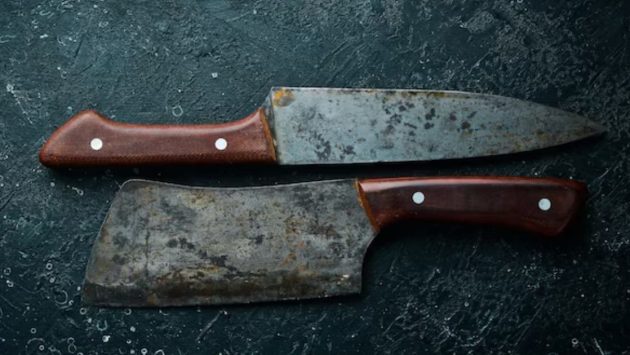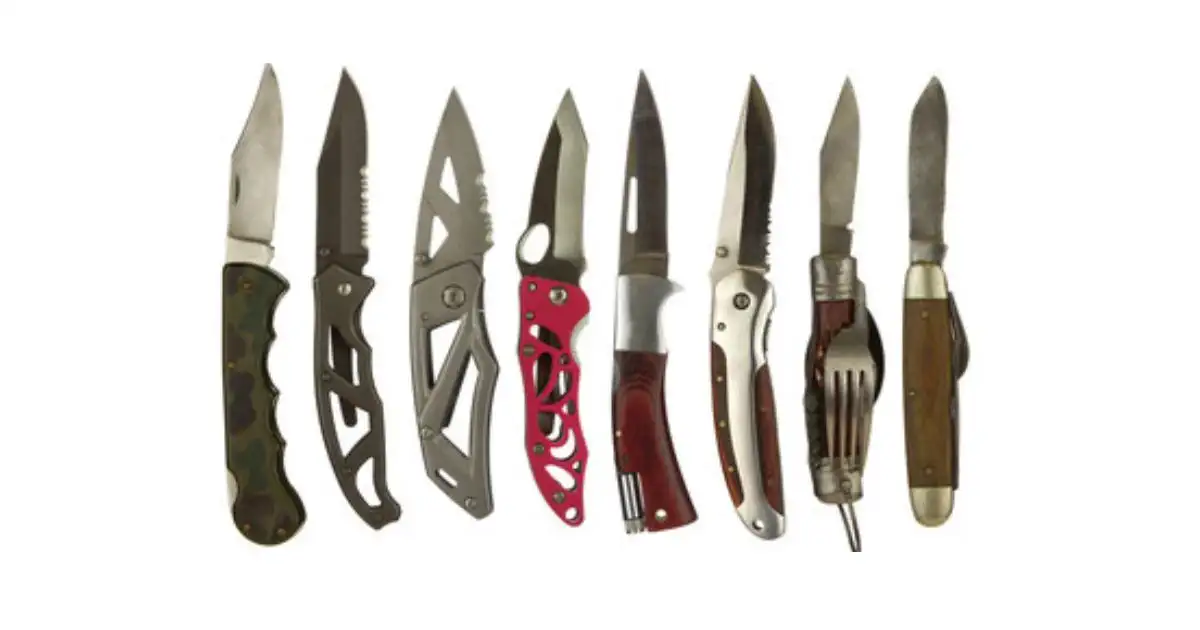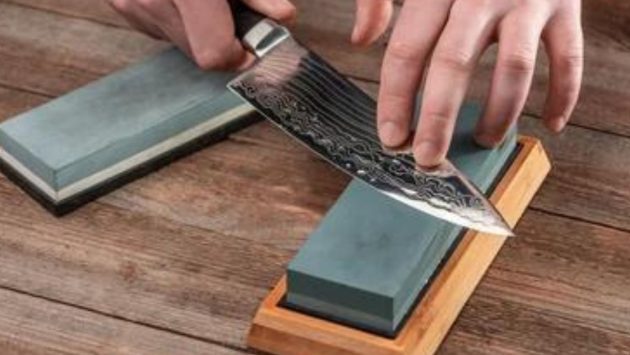Knife knowledge 101: The difference between a Chef Knife and a Butcher Knife
Table of Contents
ToggleIntroduction
When it comes to cooking, a skill’s tools can vary just as much as the meals it produces. Of all these devices, knives have the best status. They are accessible in an extensive range of masses and shapes, and each has a detailed function in the kitchen. The difference between a chef knife and a butcher knife are two examples of these knives that are regularly in the hands of home cooks and expert chefs. But what essentially makes them on their own? Knowing the differences between a chef and a butcher knife can progress your cooking skills and kitchen practice, regardless of whether you are a loving home cook or somebody who is attracted to food. In this blog post, we’ll examine the differences between chef and butcher knives and highlight their special qualities: intended functions and practical application.
What is a Chef's knife?
A chef’s knife is one of the most common types of kitchen knife that is the most useful and adaptable tool for culinary needs. It is a multipurpose knife that is used to handle a wide range of culinary tasks like cutting, dicing, etc effectively
Pros and Cons of Chef Knife:
Pros of Chef Knife
Versatility: A chef knife can perform a wide range of cutting tasks, reducing the need for multiple specialized knives.
Efficiency: The curved blade design allows for efficient rocking and slicing, making it suitable for high-volume cutting.
Control: Chef knives offer excellent control and precision, thanks to their design and sharpness.
Ergonomics: Well-designed chef knife handles provide a comfortable grip, reducing hand fatigue during extended use.
Speed: With a chef knife, you can work more quickly and efficiently in the kitchen.
Cons of Chef Knife:
Limited Specialization: While chef knives are versatile, they may not be the best choice for highly specialized tasks like filleting fish, boning poultry, or slicing bread.
Size: The larger chef knives may be unwieldy for individuals with smaller hands or when working with smaller ingredients.
Price: High-quality chef knives can be an investment, and professional-grade options can be expensive.
What is a Butcher knife?
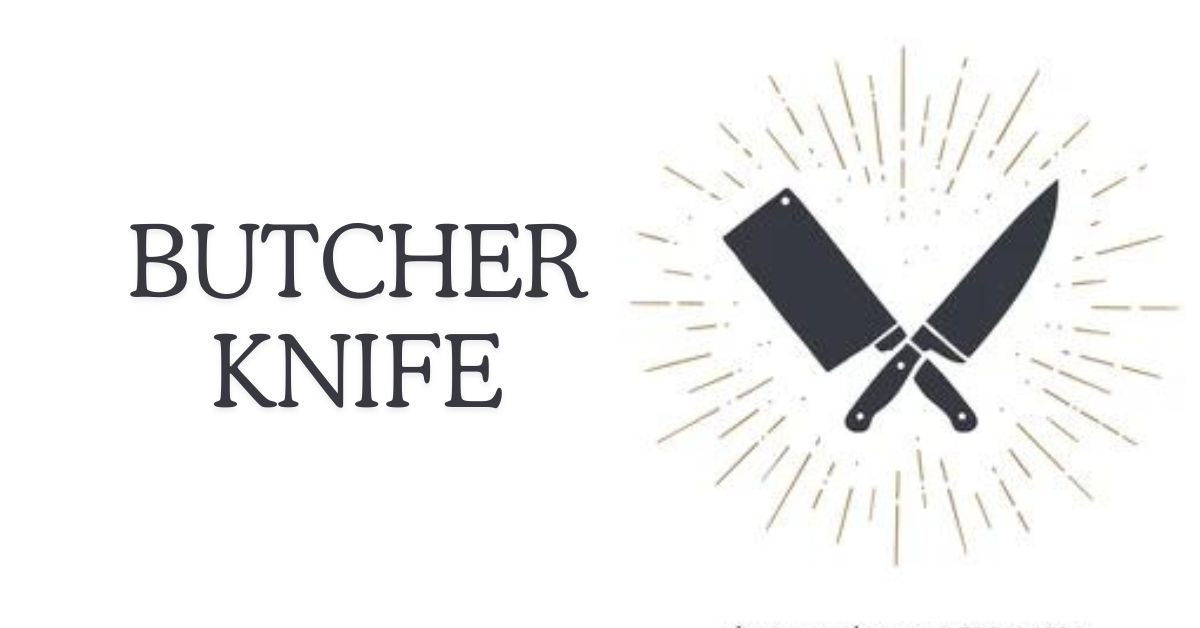
A butcher knife, as the name implies, is used to cut special items like meat processing and butchering. Because it is specially designed for heavy-duty meat cutting, trimming, and portioning.
Pros and Cons of Butcher Knife:
Pros of a Butcher knife
Precision: Butcher knives offer precise and controlled cuts through meat, making them ideal for tasks like deboning, trimming fat, and portioning meat.
Efficiency: The weight and thickness of the blade make butcher knives efficient for heavy-duty tasks, reducing the effort required for cutting through bone and dense meat.
Durability: The robust construction of butcher knives and their thick blades enhances their durability, even in demanding butchery environments.
Versatility: Different types of butcher knives, such as boning knives, cleavers, and breaking knives, cater to a range of butchery tasks, making them versatile within their domain.
Cons of Butcher Knife:
Specialization: Butcher knives are designed for specific butchery tasks and may not be suitable for general kitchen use. They are not useful for slicing vegetables and bread.
Weight: The weight of the butcher is a big disadvantage of the butcher knife. Therefore many users do not prefer to use the butcher knife.
Maintenance: Butcher knives require more intensive cleaning and maintenance due to their exposure to meat and bones. Regular maintenance is crucial for hygiene and longevity.
Key Differences between chef knife and butcher knife
Here are some key differences between a chef knife and a butcher knife.
Blade Shape:
Chef Knife: Chef knives have a curved, wide blade that allows for rocking and slicing motions. This shape is ideal for tasks like chopping, slicing, and dicing vegetables, herbs, and boneless meats.
Butcher Knife: Butcher knives have a straight, wide blade that is designed for precise and controlled cuts through meat and bone. The straight edge is more suitable for cutting through thicker and tougher materials.
Blade Flexibility:
Chef Knife: Chef knives are more flexible, allowing for delicate and precise cutting motions.
Butcher Knife: Butcher knives can vary in flexibility based on the specific tasks and types of meat being handled.
Weight:
Chef Knife: A chef knife is a good weight for handling and cutting a variety of tasks.
Butcher Knife: Butcher knives are heavier, which is advantageous for tasks like cutting through bones or dense cuts of meat. The weight adds to the knife’s cutting power.
Handle and Tang:
The handle materials and construction of both types of knives can vary, but both should provide a comfortable and secure grip. Some butcher knives may have less prominent bolsters and feature a full or partial tang, just like chef knives.
Maintenance and Safety:
Chef Knife: Chef knives require regular maintenance, including sharpening and honing, to maintain their sharpness. Proper cleaning and storage are also essential.
Butcher Knife: Due to their heavy-duty nature and potential exposure to meat and bones, butcher knives require thorough cleaning, sanitizing, and maintenance. Safety precautions are crucial when handling butcher knives.
Maintenance and Care Tips for Chef and Butcher knife
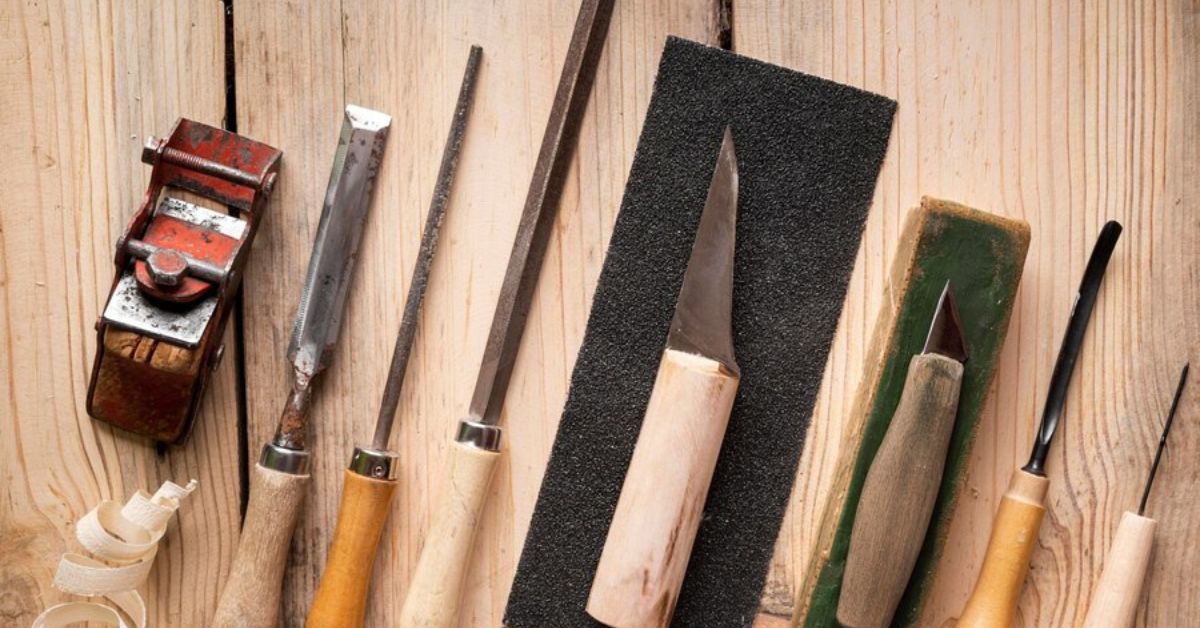
Here are some key factors that help you remain sharp and long-lasting with your knives for a long period of time, and these factors keep your chef knife and butcher knife always maintained:
- Wash knives in clean water with your hands. Avoid using a dishwasher, as the high heat, harsh detergents, and jostling can damage the blade and handle and lead to accidents during unloading.
- After removing the food particles from the blade, immediately wash and dry it. This cleaning process makes your knives easier and more effective.
- Consider using blade guards or blade covers when storing knives in drawers. It saves the blade from contact with other objects, which can be the cause of its dullness.
- To keep your knife’s edges remain sharp regularly use a honing rod or sharpening steel to realign the edge of your knife’s edges. Regularly use a honing rod or sharpening steel to realign the edge of your knife.
- Sharpen your knives as needed to maintain their edge. You can use a sharpening stone, honing guide, or an electric knife sharpener.
- Choose appropriate cutting boards made of wood, bamboo, plastic, or rubber. Avoid cutting on hard surfaces like glass, granite, or ceramic, as they can damage the knife’s edge.
- If you have carbon steel knives, apply a small amount of food-safe mineral oil to the blade after cleaning to prevent rust. Wipe off excess oil before use.
- Always handle your knives safely. After using them, handle them with someone who can save them from children, and store them carefully.
Conclusion
In the end, the choice of the right knives that are necessary steps in your culinary needs and proper maintenance of your knives make you successful in the kitchen. Whether you are a professional chef or a home cook you must have knowledge of the characteristics and uses of different knives and taking care of them can enhance your cooking experience. In the above blog, we share every guideline that can be useful for their kitchen life more easily and selecting the knives of your choice. By following these guidelines you can keep your knives sharp long lasting, safe and always in good condition. Happy cooking!
(FAQs)
1:How can I select the right knife for a specific task?
Answer: To choose the right knife, always prefer the task at hand. Chef knives are versatile for chopping and slicing while paring knives are ideal for intricate work. Research various knife types and their features to match your needs.
2:How often should I sharpen my chef knife and butcher knife?
Answer: The frequency of sharpening depends on usage. As a general rule, hone your knife with a sharpening steel before each use to maintain the edge. Sharpening on a whetstone or with a professional sharpener should be done when the blade becomes dull.
3:Can I keep saving my chef knife and butcher knife in the dishwasher?
Answer: It’s the best idea to save your knives because the dishwasher exposes the knives to high heat and harsh detergents, which can damage the blade and handle of knives.
4:Can we follow safety considerations when using these knives?
Answer: Yes, safety is essential when working with both chef and butcher knives. Always exercise caution, proper technique, and good knife-handling practices. When using a butcher knife, especially for cutting through bone, take extra care to avoid accidents. For chef knives, be mindful of the pointed tip and the sharp edge. Additionally, maintaining sharpness through honing and regular sharpening contributes to safer knife use as a sharp blade is less likely to slip and cause accidents.
5:How do I prevent my chef knife and butcher from rusting?
Answer: To prevent rust, dry your knives thoroughly after washing, especially carbon steel blades. Apply a small amount of food-safe mineral oil to carbon steel blades and store them in a dry environment. Avoid exposing them to acidic or corrosive materials.
What is the difference between a chef knife and a butcher knife?
Answer:A chef knife is a versatile, all-purpose kitchen tool designed for chopping, slicing, and dicing a variety of ingredients. In contrast, a butcher knife is specifically crafted for heavy-duty tasks like breaking down large cuts of meat, offering durability and control. While both are essential, their designs cater to different culinary needs.


